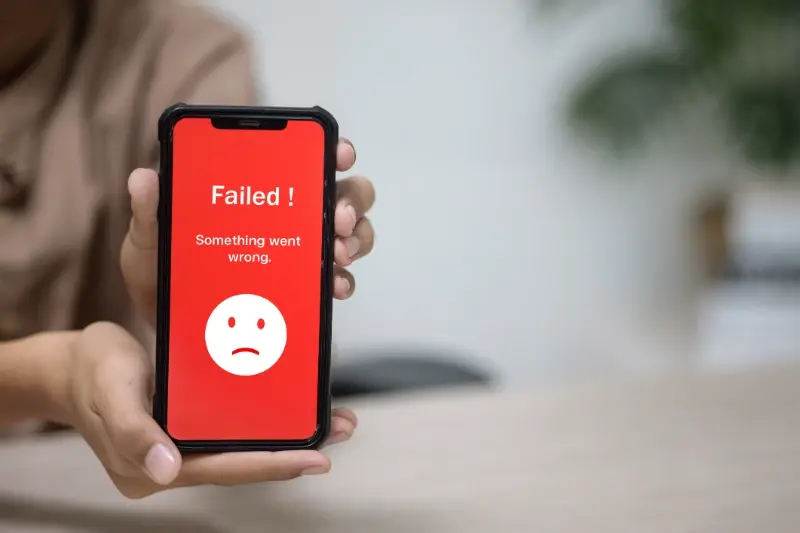Why Your MVP Might Be Too Big (and How to Make It Smaller)
Most startups fail because they build something nobody wants, yet many of these failures could have been avoided with a properly scoped minimum viable product. Instead, founders get carried away building feature-rich applications that miss the mark entirely.
The irony is that most entrepreneurs know they should start small. They've read the lean startup methodology, they understand the concept of MVP scope, and they genuinely believe they're building something minimal. Yet when I review their product specifications, I often find myself looking at what should be version 3.0 of their app, not the first release.
The biggest risk in product development isn't building the wrong thing—it's building too much of the right thing too early
This isn't about being lazy or cutting corners. It's about being smart with your resources and focusing on what actually matters. A bloated MVP doesn't just waste money and time—it obscures the core value proposition that should be driving your entire product strategy. When you try to solve every problem at once, you end up solving none of them particularly well.
The good news? Learning to identify and eliminate feature creep from your minimum viable product is a skill that can be developed. And once you master it, you'll find that smaller really can be better.
What Makes an MVP Too Big
After working with countless startups over the years, I can tell you that most MVPs fail not because they're too small—they fail because they're too big. It sounds backwards, doesn't it? But here's what I've noticed: entrepreneurs get so excited about their idea that they want to include everything from day one.
The biggest culprit is trying to solve every possible problem your users might have. I've seen teams add features for edge cases that affect maybe 2% of users, or build complex workflows that look impressive but nobody actually needs. Then there's the dreaded "while we're at it" syndrome—you know, where someone says "while we're building the login system, we might as well add social media integration and password recovery and two-factor authentication."
Common Signs Your MVP Is Too Big
Here are the warning signs I look out for when reviewing MVP plans:
- Your feature list takes up more than one page
- You're building multiple user types from the start
- The app requires extensive onboarding tutorials
- Development timeline exceeds 3-4 months
- You can't explain what the app does in one sentence
The truth is, your MVP should feel almost embarrassingly simple. If you're not slightly uncomfortable with how basic it is, you've probably built too much.
The Real Cost of Feature Creep
Let me be blunt—feature creep is expensive. Not just financially, but in ways that might surprise you. When your MVP scope starts expanding beyond its original boundaries, you're not just adding development time; you're multiplying complexity across every aspect of your project.
The most obvious cost is time. Each additional feature doesn't just add its own development hours—it creates dependencies with other features, requires extra testing, and often forces you to rethink your entire user interface. What should have been a three-month project suddenly becomes six months. Or longer.
But here's what really hurts: the delayed market entry. While you're perfecting feature number fifteen, your competitors are already gathering user feedback and improving their products. They're learning what actually matters to users whilst you're still guessing.
Track your original feature list and any additions separately. When additions outnumber your core features, you've got a problem.
The Hidden Costs You Don't See Coming
Feature creep creates technical debt that haunts you later. More features mean more code to maintain, more bugs to fix, and more security vulnerabilities to patch. Your development efficiency plummets because everything becomes interconnected.
- Increased testing time and complexity
- Higher maintenance costs post-launch
- Confused user experience
- Team burnout from endless scope changes
- Reduced product focus and clarity
The irony? Most users won't even notice half the features you're stressing about. They want something that works well, not something that does everything poorly.
Signs Your MVP Has Lost Focus
After years of working with startups and established companies, I've noticed some clear warning signs that appear when an MVP starts losing its way. The most obvious one? Your team can't explain what the app does in a single sentence anymore. If you need a paragraph to describe your MVP's purpose, you've probably added too much.
Your development timeline keeps stretching is another red flag I see constantly. What started as a three-month project has somehow become six months, then nine. This usually happens because new features keep getting added during development—the dreaded scope creep that kills so many projects.
Common Warning Signs to Watch For
- Your app tries to solve more than one main problem
- Users need a tutorial to understand basic functions
- Development costs have doubled from initial estimates
- Team members disagree on what the app's main purpose is
- You're building features "just in case" users might want them
- The app takes more than 30 seconds to explain to someone new
I've seen brilliant ideas fail because the team couldn't resist adding "one more feature" that seemed important at the time. When your MVP starts feeling complicated rather than simple, that's your cue to step back and refocus. The best MVPs do one thing really well—not ten things poorly.
How to Identify Your Core Value Proposition
Right, so you've recognised your MVP scope has got a bit out of hand—now what? The next step is getting back to basics and working out what your app actually does that matters. Not what it could do, or what would be nice to have, but what it must do to solve a real problem for real people.
Start by asking yourself this: if someone had thirty seconds to understand your app, what would you tell them? Not the features, not the clever technology—the actual benefit. What pain does it remove from their life? What job does it help them get done faster or better? I've found that if you can't explain your value in one simple sentence, you probably don't have a clear one yet.
The One-Thing Test
Here's a quick exercise I use with clients: write down everything your app does, then circle just one thing. That one thing should be the reason someone would download your app in the first place. Everything else is either supporting that core function or it's feature creep trying to sneak back in.
The best MVPs do one thing brilliantly rather than ten things adequately
Once you've identified that core value, protect it fiercely. Every feature request, every "quick addition" should be measured against whether it strengthens or distracts from that main purpose. If it doesn't make your core value stronger, it doesn't belong in your MVP.
The Art of Ruthless Feature Cutting
Right, here comes the hard part—actually cutting features from your MVP. I won't lie to you; this bit is painful. You'll feel like you're throwing away brilliant ideas, and part of you will be convinced that users won't understand your app without that extra feature. But here's the thing: they absolutely will.
The trick is to be systematic about it. Start with your core value proposition and work backwards. Every feature needs to earn its place by directly supporting that main goal. If it doesn't, it goes. No exceptions.
Your Feature Cutting Checklist
- Does this feature solve the primary problem your app addresses?
- Would users still get value from your app without this feature?
- Can this feature be added later without major restructuring?
- Does removing this feature make the app simpler to use?
- Will cutting this feature reduce development time significantly?
If you're answering "no" to the first question or "yes" to the others, that feature needs to go. I know it stings—I've been there myself countless times. But remember, you're not killing these features forever; you're just postponing them until you've proven your core concept works.
The best MVPs feel almost uncomfortably simple. That's exactly what you're aiming for.
Building Your Minimum Viable Product the Right Way
Right, so you've cut your features down to size and identified your core value proposition—now comes the fun part: actually building your minimum viable product properly. This isn't just about throwing together the bare minimum and calling it a day; there's a method to this madness that will save you months of headaches later.
Start with your riskiest assumptions first. What's the one thing about your app that keeps you awake at night wondering if people will actually use it? Build that feature first and test it with real users. I can't tell you how many times I've seen teams spend weeks perfecting secondary features whilst ignoring the elephant in the room—the core functionality that makes or breaks the entire product.
Focus on building one feature really well rather than five features poorly. Users will forgive missing functionality, but they won't forgive broken functionality.
Keep Your Development Cycles Short
Break your MVP development into two-week sprints maximum. This keeps you focused and prevents feature creep from sneaking back in through the backdoor. Each sprint should deliver something you can actually test with users—even if it's rough around the edges.
Most importantly, resist the urge to add "just one more small feature" during development. Write it down, put it in your backlog, but don't build it yet. Your future self will thank you for this discipline.
Conclusion
Building a successful MVP isn't about cramming every feature you can think of into your first release—it's about understanding what your users actually need and delivering that brilliantly. I've watched countless startups fail because they tried to build everything at once, and frankly, it breaks my heart every time.
The truth is, your MVP should feel almost uncomfortably small. If you're not slightly embarrassed by how basic it looks, you've probably included too much. That's the reality of product development; we naturally want to add more features, more bells and whistles, more reasons for people to love our creation. But users don't fall in love with feature lists—they fall in love with solutions that work.
Start with your core value proposition and build outwards from there. Test early, test often, and listen to what your users are actually telling you rather than what you think they want. The best MVPs I've worked on have been the ones that solved one problem really well, not the ones that tried to solve ten problems poorly.
Your app's success depends on focus, not features. Keep that in mind and you'll be well on your way to building something people actually want to use.
Share this
Subscribe To Our Blog
You May Also Like
These Related Stories

Why Most Startup Apps Fail and How to Avoid Common Pitfalls

Why Luxury Brands Can't Afford to Get Mobile Apps Wrong





